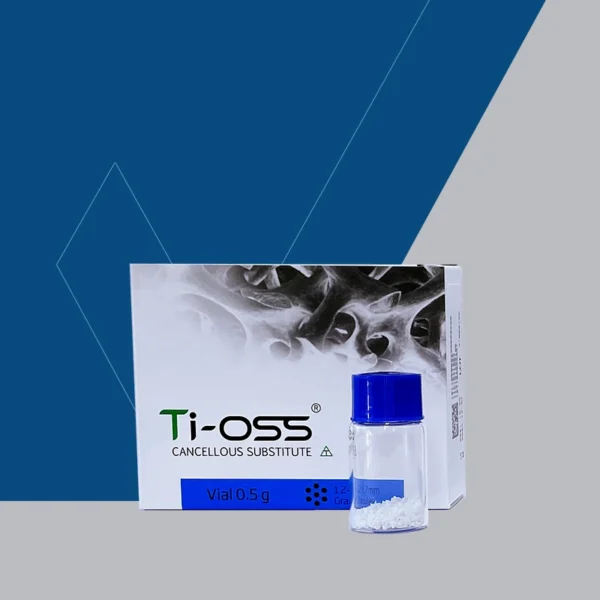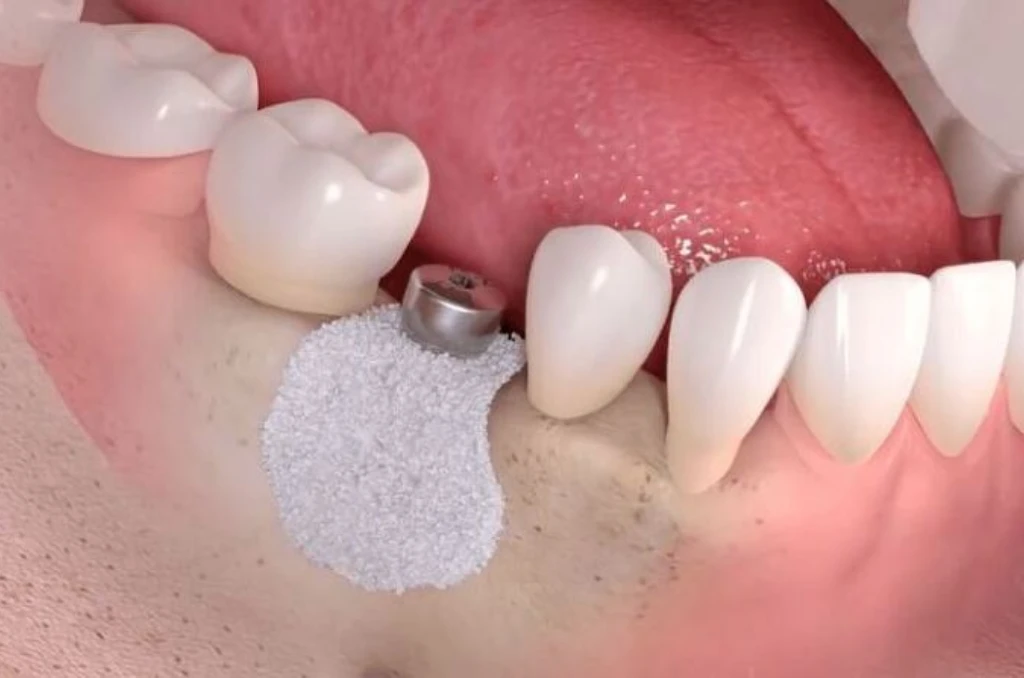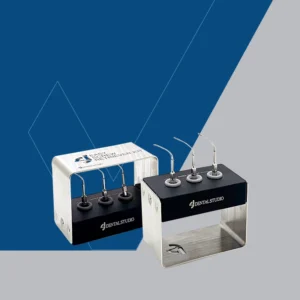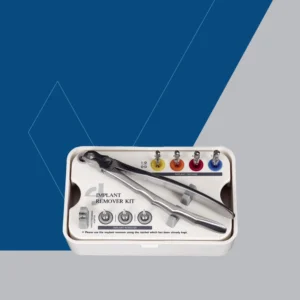Description
Dental bone powder, also known as bone graft material, is a medical product used in dentistry and orthopedics for bone reconstruction and repair. It is typically derived from human or animal sources, such as bovine bone, and is processed to ensure sterility and safety for clinical use. The primary purpose of bone powder is to promote new bone growth in areas where bone loss has occurred due to injury, disease, or surgical procedures such as dental implants or spinal surgery. It provides a scaffold for natural bone cells to grow and integrate, helping to restore structural integrity.
In dentistry, bone powder is commonly used in dental implant placement, particularly when there is insufficient natural bone to support the implant. It enhances healing and improves the success rate of osseointegration. Bone powder can also be combined with other materials, such as collagen or synthetic grafts, to boost effectiveness and accelerate bone regeneration.
What is Dental Bone Powder?
Dental bone powder is a granular or paste-like product used to restore and augment jawbone volume, providing a suitable foundation for implants and maintaining gum contours. The material can be of human, animal, or synthetic origin. It stimulates tissue repair, fills bone defects, and enhances both functional strength and aesthetic outcomes. The choice of bone powder type, particle size, membrane use, and surgical technique should be tailored to the patient’s condition, treatment goals, and clinician expertise. Recent advances have expanded the use of dental bone powder in implantology and reconstructive treatments.
General Introduction:
Maintaining and reconstructing jawbone is critical for the success of implants and periodontal surgery, as tooth loss, infection, cysts, or trauma can cause bone resorption and alter gum and smile contours. Dental bone powder serves as a primary tool for targeted bone regeneration. Whether natural or synthetic, it is used in bone grafting and implant surgeries to fill defects, stimulate tissue repair, and create a stable foundation for implant placement. Dental bone powder helps improve implant stability and enhances both functional and aesthetic outcomes.
Types of Dental Bone Powder:
Synthetic Bone Powder: Produced artificially using materials such as hydroxyapatite, tricalcium phosphate, or bioglass. Synthetic powders are valued for their stability and biocompatibility in dental implant applications.
Natural Bone Powder: Derived from human or animal bone (usually bovine), processed into a powder for grafting. Natural bone powder closely resembles human bone structure, is highly absorbable, and supports effective bone regeneration.
Applications of Dental Bone Powder:
Dental Implants: Fills empty spaces and strengthens the jawbone to ensure proper implant stabilization and osseointegration. Compatible with Korean and Sterioss dental implants.
Jawbone Reconstruction: Restores bone volume lost due to periodontal disease or trauma, creating favorable conditions for implant placement.
Bone Grafting: Fills defects in jaw and facial bones during graft surgeries.
Periodontal Therapy: Supports regeneration in areas of bone loss caused by gum disease.
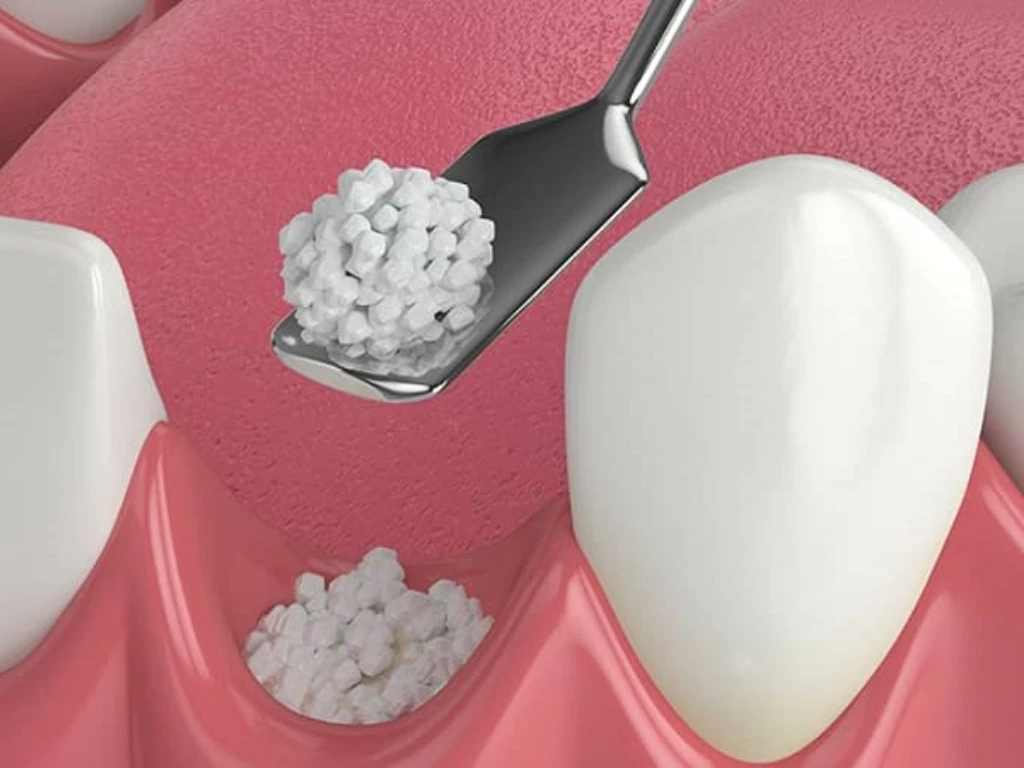
Advantages of Using Dental Bone Powder:
Biocompatibility: Natural bone powder is well absorbed by the body, reducing the risk of rejection or allergic reactions.
Improved Implant Success: Strengthens the jaw and bone, increasing implant success and reducing failure rates.
Effective Bone Repair: Accelerates bone regeneration, especially in damaged or resorbed areas.
Reduced Pain and Complications: High absorption and biocompatibility minimize post-surgical discomfort.
Important Considerations:
Choosing the Right Type: Selection depends on the patient’s needs, treatment type, and surgical objectives.
Awareness of Side Effects: Although generally safe, potential side effects may include inflammation, infection, or graft rejection.
Consultation with Specialists: Always consult a dental professional to determine the most appropriate material and technique.
Challenges and Limitations:
Cost: Natural and processed bone powders can be expensive.
Time for Integration: Absorption and integration may take several months.
Rare Incompatibility: Some patients may exhibit delayed healing or negative reactions.
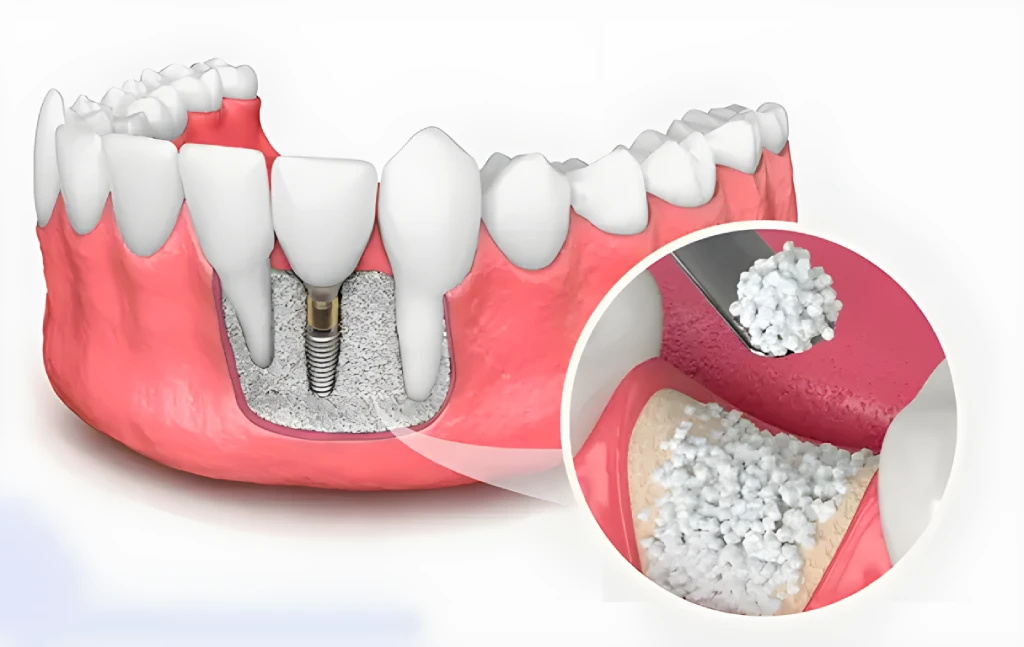
When to Use Dental Bone Powder:
Socket Preservation After Tooth Extraction: Prevents collapse of the extraction site and preserves bone width and height for future implants.
Increasing Bone Width and Height: Combined with membranes or fixation techniques to reconstruct deficient bone areas. Block grafting may be required for extensive defects.
Sinus Lift: In the posterior maxilla, lifts the sinus membrane and fills the site with bone powder to provide sufficient height for implants. Particle size and scaffold stability are crucial.
Correcting Soft and Hard Tissue Depressions: Provides a base for shaping soft tissue and restoring natural gum contours.
Post-Operative Care:
Avoid manipulating the surgical site and follow a soft diet initially
Use prescribed medications and mouthwashes as directed
Avoid smoking to prevent delayed healing
Maintain oral hygiene using soft brushes and interdental brushes after clinician approval
Attend regular follow-ups for suture and membrane monitoring
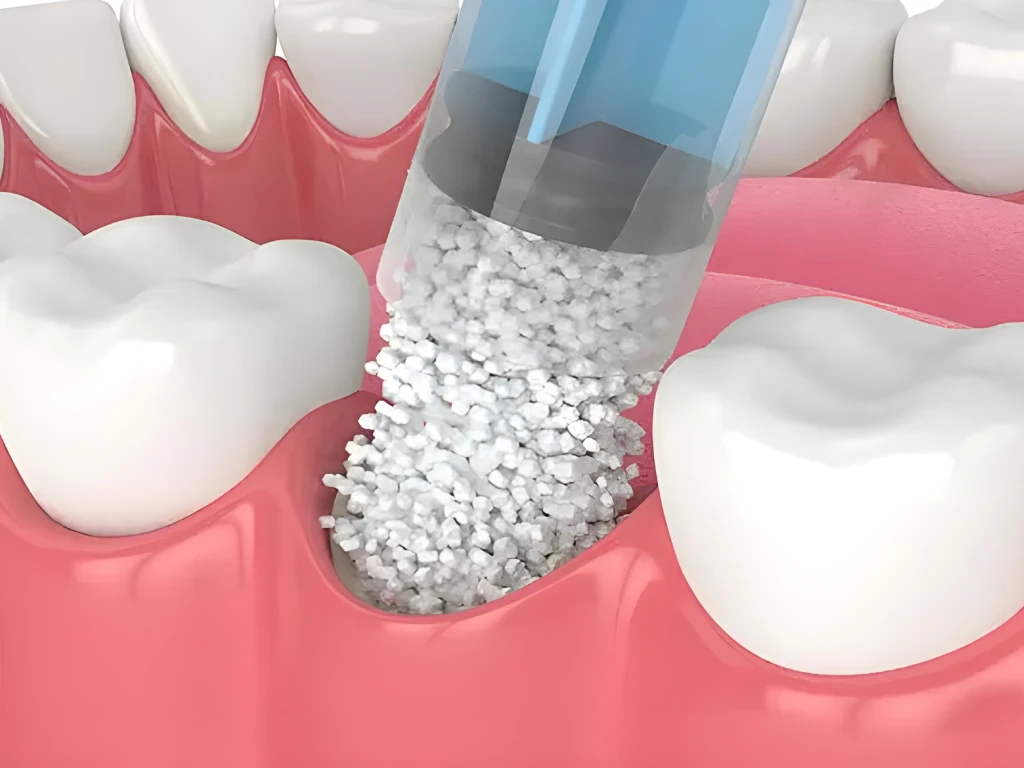
FAQ:
What is dental bone powder?
A medical material used in dentistry and orthopedics for bone reconstruction, derived from human or animal sources, sterilized for safe clinical use.How long does it take for bone powder to integrate?
Integration can take several months, depending on material type and site. Slow-absorbing materials preserve volume longer.Can bone powder and implants be used simultaneously?
Yes, if primary implant stability is adequate, limited simultaneous reconstruction may be performed. Final decision is based on clinical assessment.Is a special diet required after use?
A soft diet is recommended initially, avoiding chewing in the surgical area. Adequate hydration and avoiding very hot beverages are advised.Do all patients need bone powder?
No, if bone volume and quality are sufficient, it may not be necessary. The decision is based on imaging and clinical evaluation.
Conclusion:
Dental bone powder is an essential tool in dental surgery, supporting jawbone regeneration and strengthening for implants. Its unique properties, such as high absorbability and biocompatibility, make it a key option for implants and bone grafting. Choosing the appropriate type and consulting a dental specialist is critical. Afratab Ava, as a leading dental equipment importer, is one of the largest providers of dental bone powder.


